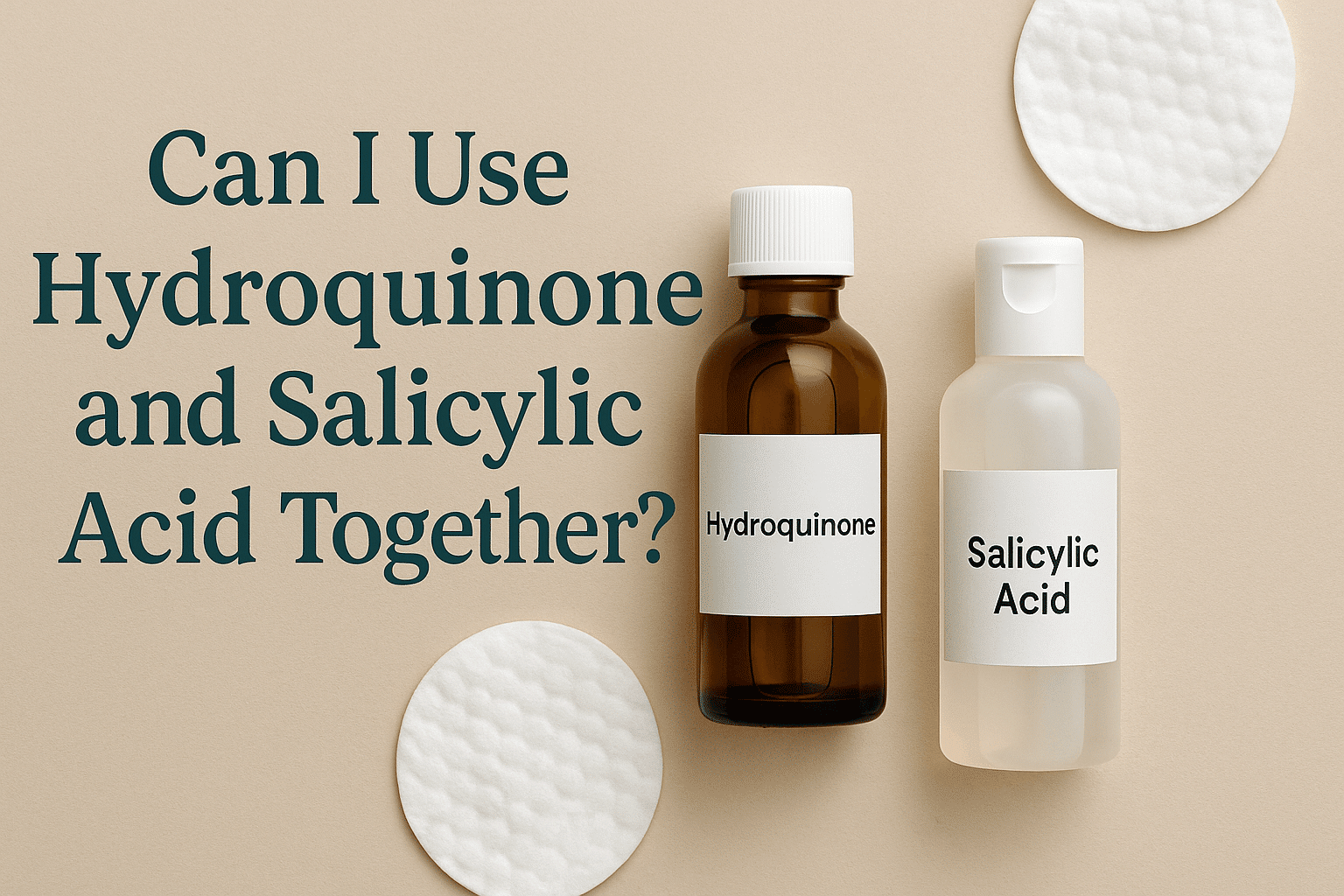Yes, but with caution. Using hydroquinone and salicylic acid can work well together for certain skin concerns like post-inflammatory hyperpigmentation from acne. However, combining them increases the risk of irritation.
- GENTLE NON-ABRASIVE LEAVE-ON EXFOLIANT: With 2% BHA (Beta hydroxy acid), to unclog & diminish enlarged pores, exfoliate dead skin cells, smooth wrinkles, and brighten and even out skin tone. Combats redness, wrinkles, aging, enlarged pores, and blackheads.
- Dramatically improves skin’s texture for radiant youthful even-toned skin. Beta hydroxy acid (BHA, also known as salicylic acid) mimics the natural exfoliation process of younger skin by helping it shed extra layers while unclogging and clearing pores.
- HYDRATE, BRIGHTEN & SMOOTH FINE LINES: Our unique, non-abrasive, leave-on exfoliant is gentle enough for daily use on all skin types. Exfoliates dead skin cells while clearing pores for a more even tone, plus it visibly reduces fine lines & wrinkles.
As someone who’s been in the skincare game for years, I get this question a lot. Combining active ingredients can be tricky, especially powerful ones like hydroquinone and salicylic acid.
What These Ingredients Actually Do

Hydroquinone is a skin-lightening agent that reduces dark spots and hyperpigmentation. It works by inhibiting melanin production.
Salicylic acid is a beta-hydroxy acid (BHA) that exfoliates the skin, unclogs pores, and reduces inflammation. It’s popular for treating acne.
Can You Use Them Together?
The short answer: Yes, but with caution.
These ingredients can work well together for certain skin concerns like post-inflammatory hyperpigmentation from acne. However, combining them increases the risk of irritation.
Potential Benefits of Combining
When used properly, this combination might:
- Target acne while preventing dark spots
- Enhance penetration of hydroquinone through salicylic acid’s exfoliation
- Address both active breakouts and their aftermath

Understanding Hydroquinone Better
Hydroquinone typically comes in concentrations ranging from 2% (over-the-counter) to 4% (prescription).
It’s considered the gold standard for treating:
- Melasma
- Age spots
- Post-inflammatory hyperpigmentation
- Sun damage
- Uneven skin tone
The FDA currently limits OTC hydroquinone products to 2% concentration due to safety concerns with long-term use.
Salicylic Acid Explained
This BHA is oil-soluble, meaning it can penetrate deep into pores. It’s available in concentrations from 0.5% up to 2% in most over-the-counter products.
Salicylic acid helps with:
- Preventing clogged pores
- Reducing existing acne
- Calming inflammation
- Gentle exfoliation
- Improving skin texture
The Science Behind Combining Them

When you pair these ingredients, you’re essentially:
- Exfoliating and clearing pores (salicylic acid)
- Then inhibiting melanin production to prevent dark spots (hydroquinone)
This can be especially effective for those dealing with adult acne alongside hyperpigmentation or melasma – a common concern for many people over 50.
How pH Levels Matter
These ingredients work best at different pH levels:
- Hydroquinone: Most effective at pH 3.5-4.5
- Salicylic acid: Works best at pH 3-4
This slight overlap means they can function together, but formulations matter significantly.
Risks You Should Know About
Using these ingredients together isn’t without risks:
- Increased skin sensitivity
- Possible irritation, redness, or dryness
- Higher risk of sun sensitivity
- Potential for over-exfoliation
- Rebound hyperpigmentation if used improperly
How to Safely Combine Them

If you want to try using both:
- Start with lower concentrations (1-2% hydroquinone, 0.5-1% salicylic acid)
- Introduce one product at a time to your routine
- Use on alternate days initially
- Always apply sunscreen during the day (SPF 30+)
- Monitor your skin for signs of irritation
A Sample Skincare Routine
Morning:
- Gentle cleanser
- Vitamin C serum (antioxidant protection)
- Hydroquinone treatment (if using in AM)
- Moisturizer
- Broad-spectrum SPF 30+ (absolutely essential)
Evening:
- Gentle cleanser
- Salicylic acid treatment (start with 2-3 times weekly)
- Wait 20-30 minutes
- Hydroquinone treatment (if using in PM)
- Moisturizer
Alternative Approaches
Not sure if your skin can handle both? Consider these alternatives:
- Use hydroquinone in the morning and salicylic acid at night
- Apply them on different days in your routine
- Look for gentler alternatives like alpha arbutin or azelaic acid
- Try products with kojic acid or vitamin C for brightening
Best Products to Consider
Some trusted options include:
- Differin Dark Spot Correcting Serum (2% hydroquinone)
- Paula’s Choice 2% BHA Liquid Exfoliant (2% salicylic acid)
- The Ordinary Alpha Arbutin 2% + HA (gentle alternative)
- Naturium Azelaic Acid Emulsion (another alternative)
When to Expect Results
With consistent use:
- Salicylic acid: Improvement in acne within 2-4 weeks
- Hydroquinone: Initial lightening of dark spots in 4-8 weeks
- Combined therapy: Noticeable results in 6-12 weeks
Remember that patience is key – faster isn’t always better with skincare.
When to Avoid This Combination
Don’t combine these ingredients if you have:
- Very sensitive or reactive skin
- Rosacea or eczema
- Broken or damaged skin barrier
- Pregnancy (hydroquinone is not recommended)
- History of allergic reactions to either ingredient
Long-Term Usage Concerns
Hydroquinone isn’t recommended for continuous long-term use. The typical guideline is:
- Use for 3-4 months
- Take a 1-3 month break
- Resume if needed
This helps prevent ochronosis, a rare but serious condition where skin darkens instead of lightens.
What Do Dermatologists Say?
Most dermatologists agree that while this combination can be effective, it should be approached cautiously. Many recommend:
- Starting with just one active ingredient
- Adding the second only after your skin has adjusted
- Using professional guidance when possible
- Being vigilant about sun protection
Final Thoughts
While hydroquinone and salicylic acid can be used together, it’s best to proceed with caution and possibly consult a dermatologist first, especially if you’re new to either ingredient.
Remember that consistent use of sunscreen is essential when using these ingredients, as both can increase sun sensitivity.
Have you tried either of these ingredients separately? What were your results? I’d love to hear about your skincare journey.
FAQ About Hydroquinone and Salicylic Acid
How long should I wait between applying salicylic acid and hydroquinone? Wait about 20-30 minutes between applications to allow each product to work at its optimal pH.
Can I use vitamin C with hydroquinone and salicylic acid? It’s generally better to use vitamin C in the morning and save hydroquinone/salicylic acid for evening use to prevent irritation.
Is this combination suitable for all skin types? No. Those with sensitive, reactive skin or conditions like rosacea should avoid this combination.
What percentage of each ingredient is best for beginners? Start with 0.5-1% salicylic acid and 2% hydroquinone at most.

Claudia Faucher is a full-time fitness training expert and lifestyle blogger. She is also been a certified Les Mills BodyPump instructor for the past 5 years and a fitness instructor for over 20 years. Claudia is a personal trainer and creates fitness training programs for seniors and people of all ages. She likes to use her skills and experiences to help others on their fitness journeys.
Last update on 2025-11-28 / Affiliate links / Images from Amazon Product Advertising API

